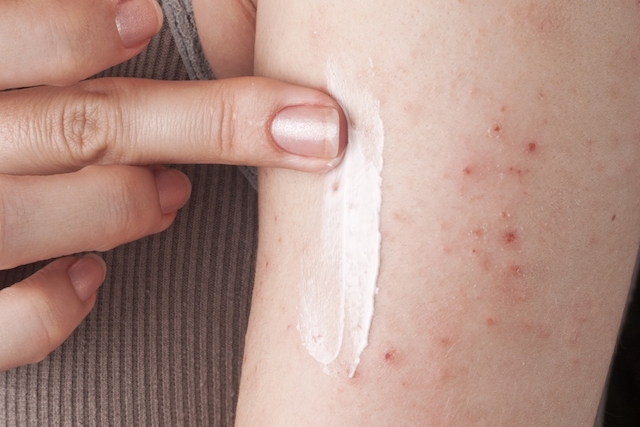Molluscum contagiosum is an infectious disease, caused by the poxvirus virus, which affects the skin, leading to the appearance of small pearly spots or blisters, the color of the skin and painless, on any part of the body, except the palms and feet.
Generally, molluscum contagiosum appears in children and can be transmitted in swimming pools, for example, but it can also affect adults with weakened immune systems, through direct contact with an infected patient or through intimate contact, and is therefore considered a sexually transmitted disease. transmissible.
Molluscum contagiosum is curable, requiring no treatment in children or adults with a healthy immune system. However, in some cases, or even in immunosuppressed patients, the dermatologist may recommend the use of ointments or cryotherapy, for example.
Photos of molluscum contagiosum


How the treatment is done
The treatment for molluscum contagiosum should be guided by a dermatologist or a pediatrician, in the case of the child, since in many cases no type of treatment is necessary for the cure, which usually takes about 3 to 4 months.
However, in cases where treatment is recommended, especially in adults, to avoid contagion, the doctor may choose to:
- Ointments: with trichloroacetic acid, combination of salicylic acid and lactic acid or potassium hydroxide; Cryotherapy: application of cold over the bubbles, freezing and removing them; Curettage: the doctor removes the blisters with a scalpel-like tool; Laser: destroys the bubble cells, helping to reduce their size.
The choice of treatment method should be individualized for each patient.
What symptoms
The main symptom of molluscum contagiosum is the appearance of blisters or spots on the skin with the following characteristics:
- Small, with a diameter between 2 mm and 5 mm; They have a darker spot in the center; They can appear in any region of the body, except in the palms of the hands and feet; Usually pearly and of the color of the skin, but they can be red and inflamed.
Children who have atopic skin or some kind of skin lesion or fragility are more likely to be infected.















